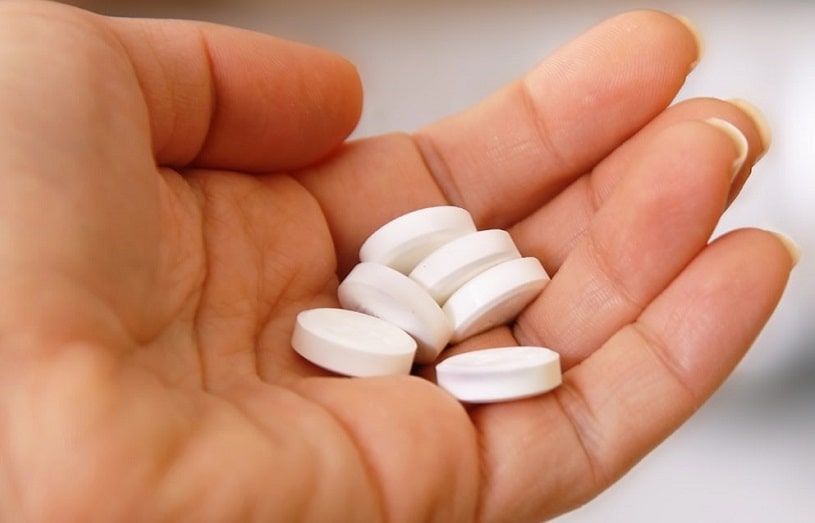
Percocet is a part of the group of prescribed painkillers, which are known as opioids. It is prescribed for patients who suffer from moderate to severe pain. It is used typically after a severe injury or surgery. Morphine-based medicines should be consumed with extreme caution because they can bring a sense of euphoric high, which gradually increases its abuse. Last few years, Percocet addiction and abuse have been widely witnessed. Its use among individuals using it for non-medical purposes has exploded.
Table Of Contents:
What Is Percocet?
Percocet is prescribed for pain relief, ranging from mild to severe (such as that after surgical procedures). It is important to know what is Percocet? It contains main components that act as the active ingredients. One is an opioid called oxycodone, while the other one is a non-opioid called acetaminophen. Both act as analgesics and are present in many painkiller drugs in various combinations with other components. The medication falls under the drug class Analgesics, Opioid Combos. It is prescribed to be taken every 4 to 6 hours in 2.5/325mg to 10/325mg dosage pills, depending on every patient’s specifics. Due to an opioid component present in it, it is not available without a prescription and is mostly prescribed for short-term use only. Combining Percocet with alcohol or with other drugs can be dangerous. Always tell your healthcare provider about other medications you are taking.

More About Opioids:
This medicine has a profound effect on the brain’s chemistry; after reaching the brain, it binds to the opioid receptors when people consume it. It takes up to 20 minutes for Percocet to work. Then the brain triggers the release of endorphins, which are responsible for making the patient feel good using the drug. People feel relaxed, and a general sense of well-being is achieved as opioids play a role in the brain’s reward center.
Prescription Opioid Abuse
During the 1990s, medical prescription of opioids started increasing. The rise in non-medical use came soon after, and despite the numbers decreasing slightly in recent years, the numbers are still pretty high. A paper published by the New York Times states that 78 people die every day just from opioid overdoses, and the abuse of these drugs is on the rise lately. There has been a five-fold increase in the use of oxycodone from 1999 to 2011. In 2015, drug overdose was a leading cause of accidental deaths, among which opioids, especially prescription painkillers, lead the way. Prescriptions almost equalling the population of America were given for opioids in 2012. Painkillers lead to around 80% of heroin addiction cases. Women are more likely to experience chronic pain, get prescription painkillers, and develop a dependency.

Percocet is among the most commonly abused prescription drugs. Oxycodone-containing medicines contributed to the largest number (150,000) of ED visits involving non-medical use. A 2014 study found that people who died of an oxycodone overdose were prescribed the medicine within 60 days before death.
Understanding Percocet Addiction and Abuse
The medication can cause addiction because the opioid, oxycodone, is present in it.
When a Patient Uses Opioids, they Produce Two Main Effects:
- The first is the effect on opioid receptors, which affect the neurons such that they send fewer signals for pain, and hence the body can tolerate pain.
- The second effect can be seen with the release of dopamine. It targets the dopamine receptors due to which the neurons responsible for dopamine synthesis produce more and more dopamine creating a happy state, which helps fight the anxiety and depression associated with the pain (such as chronic pain).
Over time, the body starts to develop tolerance to the regular dosage, and the number of molecules of opioids required to produce the same effect increases. This means, gradually, a higher dose is needed for the same effect. This leads to dependence because the body fails to achieve the same effects on its own.
Every time a patient tries to stop an opioid medication abruptly, they start experiencing withdrawal symptoms.
According to a journal by Clinical EEG and neuroscience, before the brain is fully developed (up to the patient’s mid 20’s), addiction to drugs, like oxycodone acetaminophen, may increase the risk for Percocet addiction later in their life due to the potential influence on the developing brains.
Signs and Symptoms of Percocet Addiction
At the initial phase, Percocet side effects are not apparent to the casual observer and may not even be evident by the addict. A person can become addicted to this drug after 2 or 3 weeks, as most medical professionals claim. The user’s tolerance to the medication grows when the addict feels the need for more than the usual dosage to generate the same effects.
Physical & Behavioral Percocet Addiction Signs
Even if an individual has a legitimate prescription, signs that a patient is abusing the painkiller may be noted by its symptoms. When it comes to Percocet vs. oxycodone, these signs could also be indicated in patients abusing both drugs. Once the painkiller becomes an addiction, a patient tends to show behavioral and physical changes and effects visible to his surroundings.
Behavioral Percocet Addiction Signs:
- The urge to get the drug by all means, even illegal. The drug has a high street value, so addicts may try to steal money or start selling their property
- Ingesting the drug in dangerous situations, e.g., while driving
- Avoiding social gatherings
- Using the drug in another way than prescribed, for example, snorting, smoking, or chewing it
- Acquiring this drug through other illicit means. Attempting to obtain a fraudulent prescription
- Though the prior use of this drug has resulted in adverse effects, yet the person goes for its prolonged abuse
- Consuming pills in a maximum number of quantities for an extended period
- Continuous failure in attempting to reduce medicine consumption
Physical Percocet Addiction Signs:
- Difficulty with speech
- Lack of coordination and motor skills
- Loss of weight
- Slow heart rate
- Complete exhaustion
- Constipation or diarrhea
- Fatigue
- Insomnia or sleeping problems
- Shallow breathing
- Signs of withdrawal symptoms when not using the drug
- Getting agitated or angry easily
- Difficulty in producing milk in breastfeeding mothers
Percocet Withdrawal
Once a person’s body becomes dependent on such drugs, they find it hard to limit their intake, so Percocet withdrawal may become a complicated procedure. Percocet withdrawal symptoms can range from physical to psychological. Withdrawal symptoms tend to occur during the detox process – when the body is eliminating the system’s toxic elements. The detoxification process can be quite agonizing, but breaking the addiction chains is a vital first step one must undertake to establish a healthy lifestyle.
Percocet withdrawal symptoms can be of two types – psychological and physical. The intensity of these symptoms depends on the severity of the person’s addiction. Such symptoms tend to occur within 12 hours following the last consumption. There are two stages of Percocet withdrawal. The following physical and psychological symptoms appear during withdrawal.
Physical Symptoms:
- Lethargy
- Restlessness
- Irritation
- Runny nose
- Teary eyes
- Insomnia
- Body Aches
- Excessive sweating
- Excessive yawning
- Drowsiness
- Fatigue
- Low energy
- Muscle spasms
- Fever and chills
- High blood pressure
- Appetite changes
- Nausea, vomiting
- Abdominal cramps
- Increased heartbeat
- Goosebumps
- Dilated pupils
- Diarrhea or constipation
Psychological Symptoms:
- Anxiousness
- Mood swings
- Inability to concentrate
- Depression
- Aggression
- Paranoia
- Hyperactivity
- Impaired memory
- Lack of motivation
How Long Does Percocet Withdrawal Last?
The withdrawal process will be different for every individual depending on multiple factors, like how long they’ve been using, concomitant use with other drugs, the dosage, etc. Howerer, Percocet withdrawal will usually follow the below described timeline.
1st Day
As soon as the drug’s last dose has been consumed, it could take a few hours for Percocet withdrawal symptoms to appear. The Half-life of the oxycodone component is 2-5 hours.
2nd – 3rd Day
The initial withdrawal symptoms may include nausea, body aches, muscle spasms, and excessive sweating that might become more intense by opiate withdrawal day 2. Severe symptoms such as cramping and shaking do not usually occur until opiate withdrawal day 3, accompanied by nausea and muscle spasms.

4th – 7th Day
After day 3, the intensity of physical symptoms starts decreasing. On day 6 to 7, the physical symptoms start to disappear, and the psychological symptoms are at their highest peak. The patient might experience severe anxiety and depression during this period. Once the drug has been eliminated from the body, the patient might feel remorse for the incidents that occurred during the period they were intoxicated. This is the time when the patient is at the highest risk of falling into a relapse. Thus their physical, as well as mental health, should be monitored when coming off Percocet.
2nd Week and Beyond
The psychological symptoms gain more intensity at this point, and users can experience depression and anxiety, leading to a state of hopelessness and suicidal tendencies. The risk of relapse is highest during this stage. The length of this stage depends on the length of drug use.
Percocet Addiction Treatment
To break free from Percocet addiction, it is essential to choose the right treatment solution. Percocet addiction treatment includes the use of medications, behavioral therapy, and continuous screening of mental and physical conditions. These treatments are immensely beneficial for a drug-addicted person.
Detox Process
Since Percocet withdrawal can also be potentially life-threatening, it’s recommended that opiate addicts undergo an appropriate detoxification treatment to rid the body of all the toxic elements and give it a chance to heal.
Various Factors That May Influence the Detox Process Include:
- A dosage strength being administered
- Duration of usage
- A quantity of the drug being used
- Age and overall health of an individual
- History of mental disorders and disabilities
How to Handle the Detoxification Process?
Depending on the severity of the patient’s addiction, detoxification from Percocet drug can last for a long time. It can be very unpleasant too. It is highly recommended to look for professional help or rehab while undergoing the detox process though it is not fatal.
In the time of the drug detox, many clinics assist the patient in the detox process. Everyone involved can rest assured of a safe and well-managed detox process with a team of highly trained professionals to guide the patient through the process.
Treatment Medications
Several medications can be used to help addicts in coping with their withdrawal symptoms from Percocet. These medicines trick the brain into believing that oxycodone is still being administered when, in fact, it’s not. This helps in reducing the severity of the symptoms. There are many medications that interact with it badly, so ask a physician first to know what drugs can be used safely.
Here Is a List of Common Medications That Are Prescribed to a Patient Suffering From Opiate Addiction:
- Clonidine
- Suboxone
- Naltrexone
- Methadone
- Buprenorphine
- Naloxone
The two most common drugs prescribed for this purpose are Clonidine and Lofexidine. These help reduce the effects of most common withdrawal symptoms such as aching, cramping, anxiousness, and excessive sweating. Methadone is prescribed for long-term Percocet drug withdrawals, as it helps in significantly reducing the cravings. Buprenorphine, which is also a commonly prescribed medication, has been found to resolve the symptoms associated with Percocet drug withdrawal faster than other medicines available in the market. Sometimes marijuana can also be used instead for pain treatment. Some patients might feel the need to seek Percocet withdrawal help from psychiatrists to receive the necessary counseling and treatment to overcome such addictions. Regular sessions will help in alleviating mood swings and depression.
Recovering from Percocet Addiction
It is often considered a lifetime process when it comes to the recovery from this drug addiction. A patient may need to undergo a period of consultation about the drug while preparing for detoxification. During the process, the patient’s status regarding the addiction can be assessed, and the patient will be evaluated entirely. Professional care is crucial for people who need special conditions; for example, women taking the opioid during pregnancy.

Group therapy might be conducted in a clinical, rehabilitation setting, or the community through organizations such as Narcotics Anonymous. To determine the most effective long-term recovery treatment, the patient should try all the possible solutions.
Ending The Addiction Trap
Living with a painkiller addiction is nothing less but stressful. It seems quite difficult when it comes to detoxification of the body and experiencing Percocet withdrawal symptoms. It might be even more challenging to stay clean and drug-free for the rest of your life. If someone is suffering from this form of addiction, they should be audible about it and talk to close friends and family about their problems. They should consider going into drug rehab centers to help them handle their addiction. Professional and qualified medical personnel help patients to stay drug-free.
Patients undergoing drug addiction treatment are at high risk of falling into a relapse. Thus it’s crucial to get social support to speed up the drug recovery process. Regular counseling sessions and support group therapies offered at professional rehabs help the patients treat the root cause of their problem while keeping their psychological symptoms at bay.
Frequently Asked Questions
What is in Percocet?
The painkiller has two main ingredients: opioid oxycodone and non-opioid acetaminophen. While oxycodone works directly on the brain, acetaminophen’s exact analgesic mechanism is still not clear. It also contains some inactive ingredients: Colloidal silicon dioxide, croscarmellose sodium, microcrystalline cellulose, povidone, pregelatinized cornstarch, and stearic acid.
Is Percocet an opioid?
Yes. Percocet is an analgesic that has two main ingredients: oxycodone and acetaminophen. Oxycodone is an opioid, while acetaminophen is non-opioid. The oxycodone part of the drug works on the opioid receptors in the brain to alter its response to pain by increasing pain tolerance. In lower dosages, it displays selectivity to mu-receptors, but in higher dosages, it can bind to other receptors as well.
Does Percocet have codeine in it?
No. It contains the alternate opioid oxycodone. However, in patients with codeine sensitivity, Percocet has been known to generate an anaphylactic reaction. Both are opioids, and both cause side effects such as dizziness, lightheadedness, depression in breathing, sedation, nausea, vomiting, constipation, dry mouth, itching, rash, and others. Both have the potential for addiction and display similar withdrawal symptoms.
What is Percocet used for?
It is used as an analgesic to relieve pain ranging from mild to severe (such as post-operative pain), for which both the active ingredients play their part. It can also be prescribed as an antitussive for cough suppression because it contains oxycodone. Percocet is also prescribed an antipyretic medication for fever because it contains acetaminophen.
Find Drug Rehabilitation Centers Near You Anywhere In the US
Addiction Resource team has compiled an extensive list of the top drug rehabilitation facilities around the country. Use our locator tool to find the best centers near you.
Page Sources
- Adam Warner. America's Deadly Opioid Epidemic By the Numbers. 2017. https://www.nbcnewyork.com/news/local/Americas-Deadly-Opioid-Epidemic-By-the-Numbers-458709663.html
- Center for Behavioral Health Statistics and Quality. Behavioral health trends in the United States: Results from the 2014 National Survey on Drug Use and Health. 2015. https://www.samhsa.gov/data/sites/default/files/NSDUH-FRR1-2014/NSDUH-FRR1-2014.pdf
- Squeglia LM, Jacobus J, Tapert SF. The influence of substance use on adolescent brain development. Clinical EEG and neuroscience. 2009 Jan;40(1):31-8. http://www.ncbi.nlm.nih.gov/pmc/articles/PMC2827693/
- NIDA. FDA approves first medication to reduce opioid withdrawal symptoms. 2018. https://www.drugabuse.gov/news-events/news-releases/2018/05/fda-approves-first-medication-to-reduce-opioid-withdrawal-symptoms
- HHS. FDA Pregnancy Categories. 2020. https://chemm.hhs.gov/pregnancycategories.htm
- World Health Organization. Training manual for clinical guidelines for withdrawal management and treatment of drug dependence in closed settings. Manila: WHO Regional Office for the Western Pacific; 2009. https://www.ncbi.nlm.nih.gov/books/NBK310652/
- Wakeman S. Lofexidine: Another option for withdrawal from opioids, but is it better? 2018. https://www.health.harvard.edu/blog/lofexidine-another-option-for-withdrawal-from-opioids-but-is-it-better-2018060614515
- CDC. Opioid Basics. 2020. https://www.cdc.gov/drugoverdose/opioids/index.html
- ASAM. Opioid Addiction2016 Facts & Figures. https://www.asam.org/docs/default-source/advocacy/opioid-addiction-disease-facts-figures.pdf
- Chuck E and Edwards E. 78 People Die a Day From Opioid Overdose, Surgeon General Says in Landmark Report. 2016. https://www.nbcnews.com/health/health-news/78-people-die-day-opioid-overdose-surgeon-general-says-landmark-n685366
- Berger FK, Jolla L. Opiate and opioid withdrawal. 2020. https://medlineplus.gov/ency/article/000949.htm
- Gallego AO, Baron MG, Arranz EE. Oxycodone: a pharmacological and clinical review. Clinical and Translational Oncology. 2007. https://link.springer.com/article/10.1007/s12094-007-0057-9
- Medline Plus. Opioid Misuse and Addiction. 2020. https://medlineplus.gov/opioidmisuseandaddiction.html
- Emery MA, Bates MS, Wellman PJ, Eitan S. Differential effects of oxycodone, hydrocodone, and morphine on activation levels of signaling molecules. Pain Medicine. 2016. https://academic.oup.com/painmedicine/article/17/5/908/1752443
- National Academies of Sciences, Engineering, and Medicine. Pain management and the opioid epidemic: balancing societal and individual benefits and risks of prescription opioid use. https://www.ncbi.nlm.nih.gov/books/NBK458661/
- FDA. Percocet. 2006. https://www.accessdata.fda.gov/drugsatfda_docs/label/2006/040330s015,040341s013,040434s003lbl.pdf
- Kolodny A, Courtwright DT, Hwang CS, Kreiner P, Eadie JL, Clark TW, Alexander GC. The prescription opioid and heroin crisis: a public health approach to an epidemic of addiction. Annual review of public health. 2015. https://pubmed.ncbi.nlm.nih.gov/25581144/
- Rudd RA, Seth P, David F, Scholl L. Increases in drug and opioid-involved overdose deaths—United States, 2010–2015. Morbidity and mortality weekly report. 2016. https://www.cdc.gov/mmwr/volumes/65/wr/mm655051e1.htm
- CDC. Opioid Painkiller Prescribing, Where You Live Makes a Difference. 2014. https://www.cdc.gov/vitalsigns/opioid-prescribing/
- Jones CM. Heroin use and heroin use risk behaviors among nonmedical users of prescription opioid pain relievers–United States, 2002–2004 and 2008–2010. Drug and alcohol dependence. 2013. https://www.sciencedirect.com/science/article/abs/pii/S0376871613000197
- CDC. Prescription Painkiller Overdoses: A Growing Epidemic, Especially Among Women. 2013. https://www.cdc.gov/vitalsigns/prescriptionpainkilleroverdoses/index.html
- OxyContin P, Methadone H, Valium X, Klonopin H. What are the dangers associated with nonmedical prescription drug use? https://www.projectrightchoice.com/wp/wp-content/uploads/2013/10/factsheet_ncadd_-prescriptiondrugs.pdf
- SAMHSA. Drug Abuse Warning Network, 2011: National Estimates of Drug-Related Emergency Department Visits. 2013. https://www.samhsa.gov/data/sites/default/files/DAWN2k11ED/DAWN2k11ED/DAWN2k11ED.pdf
- Hirsch A, Proescholdbell SK, Bronson W, Dasgupta N. Prescription histories and dose strengths associated with overdose deaths. Pain medicine. 2014. https://pubmed.ncbi.nlm.nih.gov/25202775/


 Reviewed by:
Reviewed by:  Written by:
Written by: 


 FindTreatment.gov
FindTreatment.gov